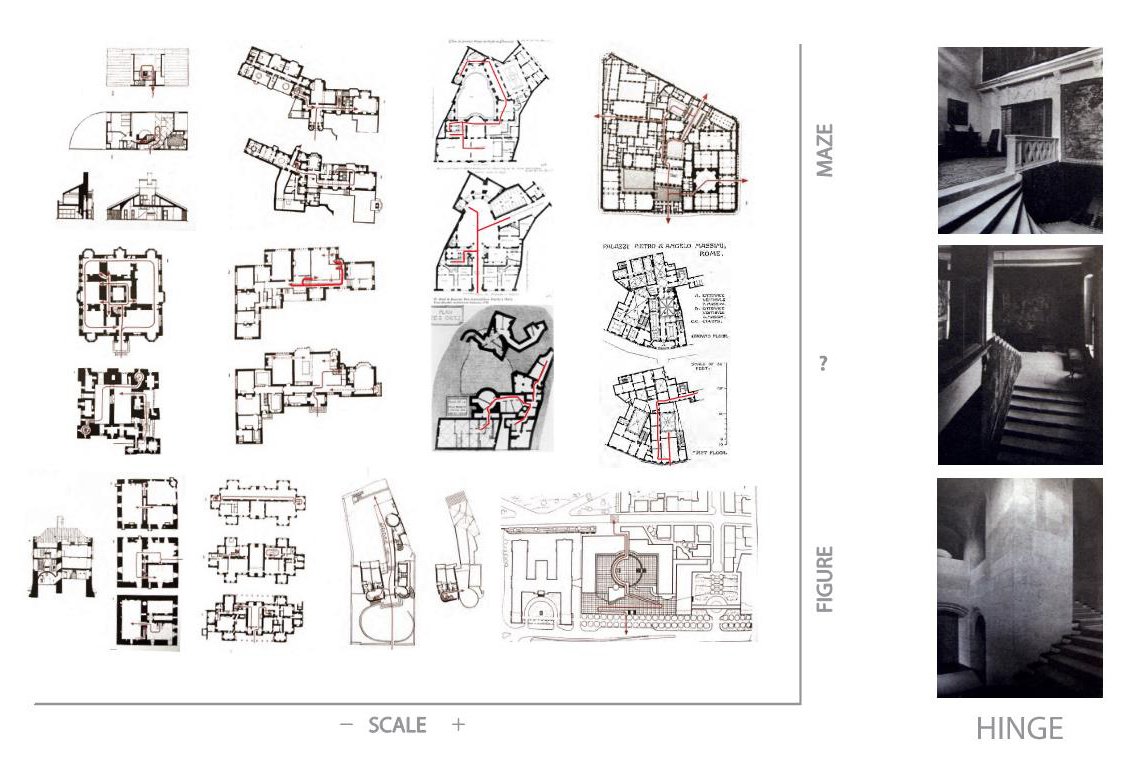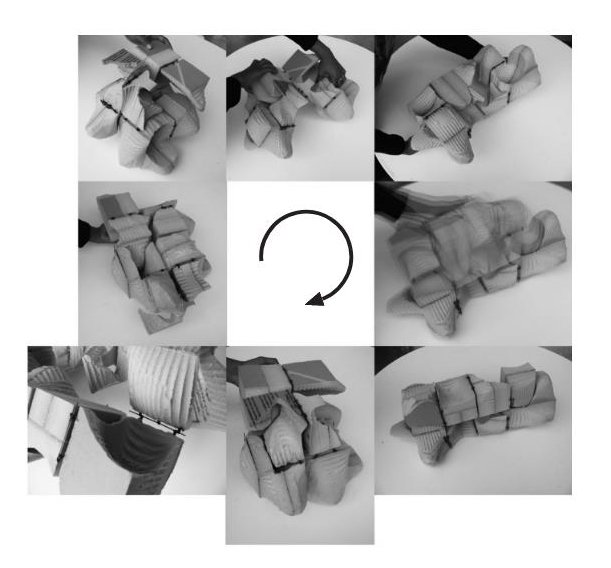Folding Space
“The intriguing discrepancy between spatial reality and what the user understands about it - the problem of the map.”




Architecture responds to spatial constraints. The device of a joint or hinge is an archetypal spatial condition which allows redirecting the flow of space around an obstacle - often for reasons of volumetric efficiency and in pursuit of exciting adjacencies. This project applies digital tools to the problem of space packing. A predefined programmatic connectivity diagram is folded into a tight, irregular site.
Joints break up and mark space facilitating its understanding by the user. Too few joints are boring, too many create a maze.
The prototypical design is a museum fitted in a tight space on a New York City lot.
[click to enlarge]
advisor: Axel Kilian, 2012





















